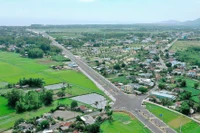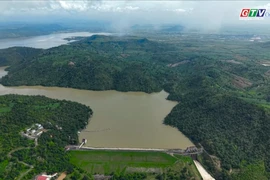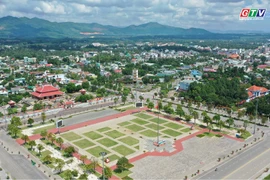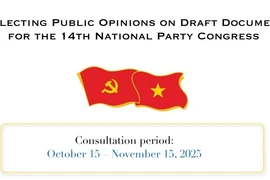
The merger of Gia Lai and Binh Dinh provinces has officially reopened An Khe Pass, the historic administrative boundary between the two localities,, marking the start of a new chapter for regional connectivity. The unified province is expected to become a major growth hub, linking Vietnam’s Central Highlands with the South Central Coast and promoting trade, tourism, and cultural exchange.
According to Ha Son Nhin, former member of the Party Central Committee and former Secretary of Gia Lai Provincial Party Committee, the administrative merger is “a timely and strategic decision” aligned with Vietnam’s current development trajectory and international trends.
Tran Van Nhan, former Chairman of Binh Dinh People’s Committee, said the consolidation will unlock “strong development potential” and enhance regional integration for sustainable economic growth.
Once the Quy Nhon-Pleiku Expressway is completed, it is expected to significantly boost trade, tourism, logistics, and regional connectivity. “With its existing strengths, the new Gia Lai Province will have a solid foundation for long-term growth,” he said.
At the same time as approving the merger, Vietnam’s National Assembly also endorsed investment in the Quy Nhon-Pleiku Expressway, a project valued at over 43 trillion VND (approximately USD 1.68 billion), scheduled for completion by 2029. The expressway will form part of a synchronized transport system including Quy Nhon Port, Phu Cat Airport, Pleiku Airport, and the North-South Expressway, ensuring seamless regional circulation.
Ho Lien Nam, Deputy General Director of Quy Nhon Port, said the expressway would deliver “substantial economic benefits” for the region. “Developing logistics services will reduce transport costs and enhance the competitiveness of Central Highlands enterprises in global markets,” he noted.
Echoing this optimism, Nguyen Thi Diem Hang, Vice Chair of the Vietnam Agricultural Business Council and CEO of VinaNutrifood Binh Dinh, praised local authorities for rapidly adapting to the two-tier administrative model, enabling more direct governance and responsiveness to citizens’ needs.

Local leaders and residents have also expressed strong support. K’sor Kroyh from Bien Ho Commune said the expansion of Bien Ho’s administrative boundaries through merging neighboring communes would “create more development opportunities.”
Nguyen Minh Long from Tay Son Commune added: “We support the merger wholeheartedly. We believe it will lead to a more prosperous Gia Lai and improve the lives of future generations.”
To ease the transition, Gia Lai’s Provincial People’s Council passed Resolution No. 02/2025/NQ-HĐND on July 22, offering financial support for civil servants affected by workplace relocation.
Each person moving between the old administrative centers of Pleiku and Quy Nhon will receive 6 million VND (about USD 235) per month, 2 million VND for travel and 4 million VND for housing, for two years, from July 1, 2025, to June 30, 2027.
In the early days after the merger, the provincial Department of Construction also arranged “zero-fare” bus trips to help employees commute between Pleiku and Quy Nhon. The buses depart at 3:15 a.m. every Monday and return at 5:30 p.m. each Friday, serving around 400 passengers weekly.
Nguyen Van Nga from the Provincial Vietnam Fatherland Front Committee said the free transport program has helped workers “feel more confident and supported.”
Tran Dinh Son, Deputy Director of the Department of Construction, added that transportation companies have been asked to increase capacity to meet growing travel demand.





































